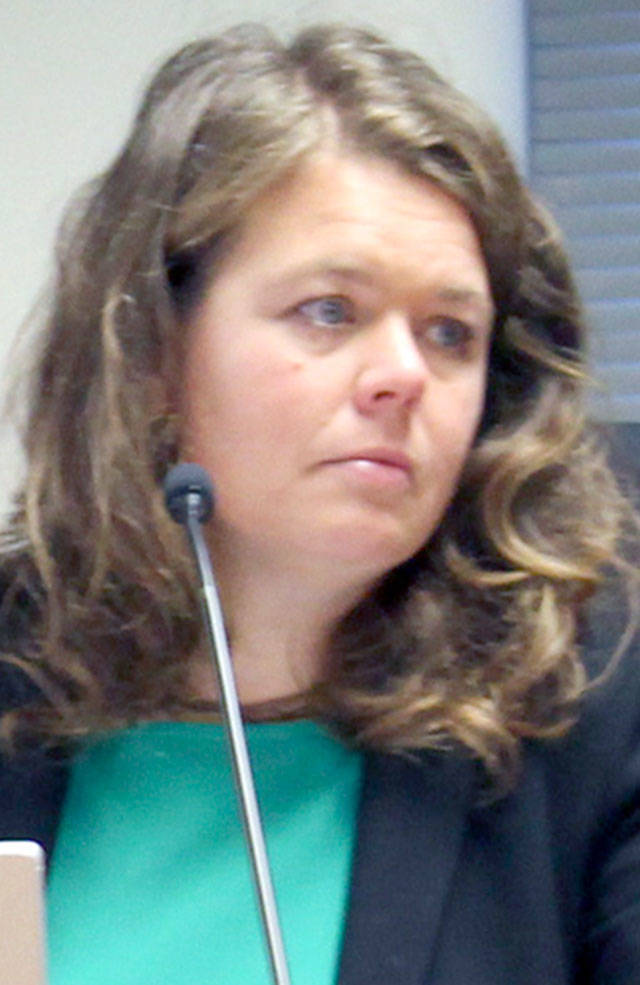PORT HADLOCK — After more than 15 years of off-and-on discussions and planning, the Port Hadlock Sewer Project is closer than ever to coming to fruition now that Jefferson County has received word it will receive more than $20 million from the state for the facility.
The county was notified Monday that the state Legislature awarded the project $20.175 million from federal relief and infrastructure funding provided to the state to allocate.
The estimated cost to bring the sewer to the Phase 1 commercial core area of Port Hadlock is $23.6 million.
The county received $1.422 million from the state last year for the project’s design, leaving about $2 million needed to fully fund the project, said Monte Reinders, county public works director, in a press release.
The county is seeking other funding sources to cover the remaining costs, including grants from the state Department of Ecology, the U.S. Economic Development Administration and others, Reinders said.
“I’m confident we can close that gap now,” he said.
The core area of Port Hadlock includes lower Hadlock and the Old Alcohol Plant.
Because of the funding from the state, the county will not need to form a Local Improvement District (LID) and the sewer project will not go to a public vote, said county Commission Chair Kate Dean.
“The project is going to be much more affordable with this level of subsidy, so an LID does not feel necessary,” Dean said. “LIDs and things like bonds are really the only time that there is a vote on infrastructure projects.
“Infrastructure projects are very much in the purview of jurisdictions like Jefferson County. We will not be going out for a vote on this project. That has never been considered other than a vote for an LID.”
Even if it was needed, an LID wouldn’t be a vote of the public, only people within the core area, she added.
Construction on the sewer is expected to begin at the end of 2022 or the beginning of 2023, Reinders said.
Planning for the Port Hadlock Urban Growth Area (UGA) — including its sewer — has been under way since 1998 with public involvement at each phase, county officials said.
The UGA was formally designated in 2002 to open the area to create more jobs, additional services and affordable housing, Reinders said.
In 2017, 70 percent of property owners in the commercial core approached the county with renewed interest in seeing the sewer project completed.
County commissioners have since been actively working with legislators representing the North Olympic Peninsula, including Rep. Steve Tharinger, who chairs the House Capital Budget Committee, to get funding included in the state’s capital budget, Reinders said.
“We are extremely grateful for Rep. Tharinger’s work on behalf of Jefferson County and this project,” Dean said. “Funding at this level will allow for Port Hadlock property owners in the core area to hook up to sewer at an affordable rate.
“I’m excited to see more economic opportunity and multifamily housing and put density where it belongs — in the urban growth area.”
Tharinger hopes the funding will help the project move forward.
“It’s an important project,” he said. “I think the county, with added funds, can finish the project.
“I think it really helps complete that effort.”
Not enough
Quilcene resident Pamela Roberts, communications specialist for the Concerned Residents of Port Hadlock (CRPH) — a group that opposes the sewer system — doesn’t think the funds will accomplish what the county says they will. She quoted earlier plans on the project estimating the total cost to be more than $100 million over 20 years.
“This entire project will cost well over $120 million dollars so the state’s $20 million dollar grant is but a drop in that huge bucket,” she said in an email Monday night. “The community does not want this boondoggle strapped around their necks.
“Most of these residents are already cash strapped just to keep roofs over their heads.”
The county does not plan to expand the sewer past the core area and has scaled down the project from that initial estimate, Dean said Tuesday, adding that the new funding will allow the project to move forward and be completed.
The estimated cost of $23.6 million is expected to cover the cost of installing the modular treatment plant that utilizes membrane bioreactor technology to treat wastewater to “Class A” reclaimed water standards — required by the state Department of Ecology, Reinders said.
The county does have a 20 percent contingency plan in case costs are slightly more expensive due to labor and material costs once construction begins, Dean said.
The county plans to complete only Phase 1.
If future neighborhoods want to connect to the sewer after it is completed, the county will work with them, but the sewer will not be forced on people who don’t want to connect to it, Dean said.
There have been concerns raised by residential property owners outside the core area.
The county expects to have the design on the project — whose plans have already been approved by the Department of Ecology — to be completed in summer, and the project itself is planned to be completed by the end of 2024, Reinders said.
More specific costs to customers will be announced once the plans are finalized. Hook-up costs to the core area businesses and residents are estimated to be “relatively affordable” due to the majority of capital costs being covered by state and federal funding, Reinders said Tuesday.
The county will develop the sewer ordinance next year. That would establish the connection fees, and “I think the property owners will be mostly pleased with the result,” Reinders said.
________
Jefferson County reporter Zach Jablonski can be reached at 360-385-2335, ext. 5, or at zjablonski@peninsuladailynews.com.

